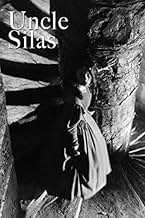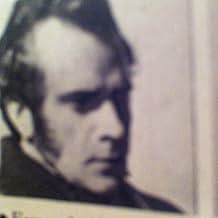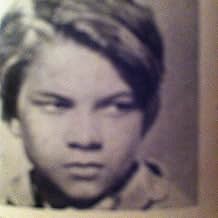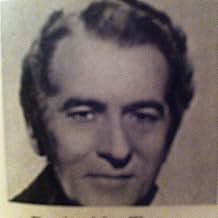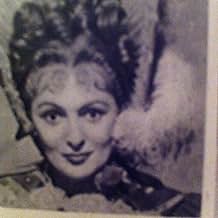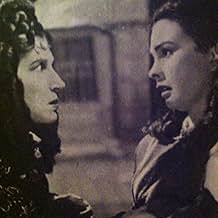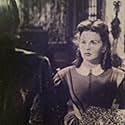Füge eine Handlung in deiner Sprache hinzuFollowing her father's death, a teenage British heiress goes to live with her guardian uncle--who is broke and schemes to murder her for her inheritance.Following her father's death, a teenage British heiress goes to live with her guardian uncle--who is broke and schemes to murder her for her inheritance.Following her father's death, a teenage British heiress goes to live with her guardian uncle--who is broke and schemes to murder her for her inheritance.
- Regie
- Drehbuch
- Hauptbesetzung
Empfohlene Bewertungen
Sir Hitchcock used to say : the more successful the villain ,the more successful the film .
And "Uncle Silas " got three memorable villains for the price of one. Katina Paxinou appears first as a French teacher ,but her lessons are so terrifying ( you 've got to pronounce "u " properly !say it again " uuuu"!) that her pupil gets nightmares at night ;she sings bizarre songs in French and she takes the ingenue for a promenade .....in the cemetery ...
.......where she meets the second villain(Manning Whiley ) who is none other than her first cousin ,son of sweet uncle Silas ....
.......who is the third baddie (Derrick De Marnay) and lives in a gloomy dark castle , par excellence the Gothic place ,with a roof which can give you the jitters ;uncle Silas is suave ,sly and ,little by little,reveals his true colors :he's the ogre of the fairy tales flash on the bone;
The three actors overplay ,in an outrageous way (mainly Paxinou), turns this Gothic tale into enjoyable grand guignol and combine their efforts to bump off pitiful Jean Simmons and to latch onto her valuable inheritance (hence the alternate title).Jean Simmons ,then at the beginning of a brilliant career ,and who had already a masterpiece under her belt ("black narcissus")
And "Uncle Silas " got three memorable villains for the price of one. Katina Paxinou appears first as a French teacher ,but her lessons are so terrifying ( you 've got to pronounce "u " properly !say it again " uuuu"!) that her pupil gets nightmares at night ;she sings bizarre songs in French and she takes the ingenue for a promenade .....in the cemetery ...
.......where she meets the second villain(Manning Whiley ) who is none other than her first cousin ,son of sweet uncle Silas ....
.......who is the third baddie (Derrick De Marnay) and lives in a gloomy dark castle , par excellence the Gothic place ,with a roof which can give you the jitters ;uncle Silas is suave ,sly and ,little by little,reveals his true colors :he's the ogre of the fairy tales flash on the bone;
The three actors overplay ,in an outrageous way (mainly Paxinou), turns this Gothic tale into enjoyable grand guignol and combine their efforts to bump off pitiful Jean Simmons and to latch onto her valuable inheritance (hence the alternate title).Jean Simmons ,then at the beginning of a brilliant career ,and who had already a masterpiece under her belt ("black narcissus")
UNCLE SILAS (called THE INHERITANCE upon initial release in the United States) fits well into the 1940s cycle of British adaptations of classic Victorian literature. Think David Lean's Dickens movies or the Alaistair Sims A CHRISTMAS CAROL, films which use gorgeous black and white photography and a blend of realism and melodrama to bring these gothic worlds to life.
Of course, UNCLE SILAS hasn't the literary pedigree of a Dickens' work: it is quite a sensational narrative, as close to the first-wave of gothic novels from the 18th century as Victorian gothic literature gets. For the trouble of being pretty and expecting a fortune when she comes of age, the heroine Caroline is threatened by a series of sinister forces connected with her Uncle Silas, a former rake and current drug addict who needs money badly to pay off his debts. He initially tries to get her to marry his lecherous son, but when Caroline makes it loud and clear that she won't do so, his methods turn ever more cruel and murderous.
UNCLE SILAS nails the gothic mood perfectly, showing the decay of Caroline's sunny adolescence as she loses her father and falls into the hands of evil. There is a wonderful symmetry in this progression-- the film begins with a close-up of the wide-eyed Caroline and ends with a similar close-up, now emphasizing her lost innocence after barely surviving the events of the film. Jean Simmons makes the perfect gothic heroine: beautiful, spunky, and virtuous, all without coming off as cloying or too dumb to live, a rare feat for this sort of story. The music is dramatic and spooky.
So why isn't the film the equal of, say, Lean's GREAT EXPECTATIONS or OLIVER TWIST? Mainly, it has to do with two things: pacing and the villains. I love a good slow burn, especially in creepy fare, but some of the middle section of UNCLE SILAS is too slow for its own good, probably because a few of these scenes lack the sinister presence of the forces pursuing Caroline and her money.
Secondly, the villains of the story are an uneven bunch. The sexually aggressive son and the ghastly governess are both slightly comical in presentation, but manage some level of menace when terrorizing Caroline. The son makes it clear he could physically overpower Caroline without a problem and what his intentions are for her, and the governess has a garish, harsh appearance and witch-like personality which would not feel out of place in a child's nightmare. Unfortunately, Uncle Silas himself is not scary at all. He is at times enjoyably camp and I'll never say no to a good ham-fest, but he's never truly frightening, often acting more like a whiny cartoon villain than the decadent, ruthless beast he is supposed to be.
I think the inconsistent sense of dread and menace is what brings UNCLE SILAS down a few pegs. It's still a good movie and one I would recommend to other classic film fans though, as its virtues outweigh its shortcomings.
Of course, UNCLE SILAS hasn't the literary pedigree of a Dickens' work: it is quite a sensational narrative, as close to the first-wave of gothic novels from the 18th century as Victorian gothic literature gets. For the trouble of being pretty and expecting a fortune when she comes of age, the heroine Caroline is threatened by a series of sinister forces connected with her Uncle Silas, a former rake and current drug addict who needs money badly to pay off his debts. He initially tries to get her to marry his lecherous son, but when Caroline makes it loud and clear that she won't do so, his methods turn ever more cruel and murderous.
UNCLE SILAS nails the gothic mood perfectly, showing the decay of Caroline's sunny adolescence as she loses her father and falls into the hands of evil. There is a wonderful symmetry in this progression-- the film begins with a close-up of the wide-eyed Caroline and ends with a similar close-up, now emphasizing her lost innocence after barely surviving the events of the film. Jean Simmons makes the perfect gothic heroine: beautiful, spunky, and virtuous, all without coming off as cloying or too dumb to live, a rare feat for this sort of story. The music is dramatic and spooky.
So why isn't the film the equal of, say, Lean's GREAT EXPECTATIONS or OLIVER TWIST? Mainly, it has to do with two things: pacing and the villains. I love a good slow burn, especially in creepy fare, but some of the middle section of UNCLE SILAS is too slow for its own good, probably because a few of these scenes lack the sinister presence of the forces pursuing Caroline and her money.
Secondly, the villains of the story are an uneven bunch. The sexually aggressive son and the ghastly governess are both slightly comical in presentation, but manage some level of menace when terrorizing Caroline. The son makes it clear he could physically overpower Caroline without a problem and what his intentions are for her, and the governess has a garish, harsh appearance and witch-like personality which would not feel out of place in a child's nightmare. Unfortunately, Uncle Silas himself is not scary at all. He is at times enjoyably camp and I'll never say no to a good ham-fest, but he's never truly frightening, often acting more like a whiny cartoon villain than the decadent, ruthless beast he is supposed to be.
I think the inconsistent sense of dread and menace is what brings UNCLE SILAS down a few pegs. It's still a good movie and one I would recommend to other classic film fans though, as its virtues outweigh its shortcomings.
I saw this film years ago as "The Inheritance," and I never forgot it. When I read the description of "Uncle Silas," I thought it sounded suspiciously like "The Inheritance" - after all, did Jean Simmons go around playing one young heir after another? After seeing it again, I'm not surprised I remembered it.
"Uncle Silas" is a Gothic thriller, based on a novel by Sheridan Le Fanu, and directed by Charles Frank, who also directed "So Long at the Fair," another wonderful film. "Uncle Silas" is the story of a young heiress, Caroline Ruthyn (Simmons) who is sent to live with her uncle (Derrick De Marney) in a dark, eerie mansion after her father's death. Her father adored his brother, who was once accused of murder, and has made Carolina a ward of Silas. However, as he's dying, he tries to change this provision, but dies before he can do it. Silas, with the help of Caroline's ex-governess (Katina Paxinou) plan to get rid of Caroline, since the inheritance then passes to him.
The acting of especially DeMarney and Paxinou is fairly over the top, but I believe this was intentional on the part of the director to give it that good old scary Gothic feel. Sinister characters often aren't very subtle in Gothic books. Jean Simmons is lovely as Catherine - vulnerable, sweet, and naive, making her a perfect target of danger.
This story was remade as "The Dark Angel" back in the '80s - I remember the sets being completely overdone, a kind of Gothic version of Liberace's house. I don't remember much else, but I'm sure O'Toole was marvelous as Silas.
As others have pointed out, the British version is recommended.
"Uncle Silas" is a Gothic thriller, based on a novel by Sheridan Le Fanu, and directed by Charles Frank, who also directed "So Long at the Fair," another wonderful film. "Uncle Silas" is the story of a young heiress, Caroline Ruthyn (Simmons) who is sent to live with her uncle (Derrick De Marney) in a dark, eerie mansion after her father's death. Her father adored his brother, who was once accused of murder, and has made Carolina a ward of Silas. However, as he's dying, he tries to change this provision, but dies before he can do it. Silas, with the help of Caroline's ex-governess (Katina Paxinou) plan to get rid of Caroline, since the inheritance then passes to him.
The acting of especially DeMarney and Paxinou is fairly over the top, but I believe this was intentional on the part of the director to give it that good old scary Gothic feel. Sinister characters often aren't very subtle in Gothic books. Jean Simmons is lovely as Catherine - vulnerable, sweet, and naive, making her a perfect target of danger.
This story was remade as "The Dark Angel" back in the '80s - I remember the sets being completely overdone, a kind of Gothic version of Liberace's house. I don't remember much else, but I'm sure O'Toole was marvelous as Silas.
As others have pointed out, the British version is recommended.
This little known film disappeared into obscurity and without much comment after its release in 1947. It has resurfaced on British TV in recent years where it has been given several matinee showings. BBC readapted the Sheridan Le Fanu novel as "The Dark Angel" for its classic novel Christmas offering in 1987. In Peter O'Toole they found a much more striking eponymous villain than Derrick de Marney but in every other sense it is the monochrome 'forties version that gives me the stronger pleasure. How could if fail with a heroine as touchingly vulnerable as Jeans Simmons at her most enchanting. The pair that later directed her in "So Long at the Fair" must have known of "Uncle Silas" when they opened their film with a similar wondrous closeup to our first encounter with her here. I know nothing of the director Charles Frank apart from "Uncle Silas" but the hands of a talented craftsman are clearly at the helm of this atmospheric adaptation of the Victorian Gothic melodrama about a dastardly uncle's attempt to wrest an inheritance from his trusting young niece. It is a pity that Derrick de Marney's hammy performance does not resonate with a greater sense of evil, but there is compensation in his confidante, Madame de la Rougierre who, in the hands of Katrina Paxinau, is one of cinema's most sinister female monsters. I was not disappointed when the sequence that had so fascinated me as an impressionable adolescent, where the evil governess embarks with her young charge on a journey of deception, emerged as powerfully as ever after a gap of so many years. The clock chimes of Bartram Manor that conclude this episode, like the huntsman's cry of "Gone to Earth" in the Powell and Pressburger masterpiece are among my most haunting cinematic memories. I often wonder if young audiences of today find similar marvels in the films made for them.
This moody version of Joseph Sheridan Le Fanu's classic Gothic novel is quite simply one of the most accomplished British films of the 1940's.
With cinematography reminiscent of (and rivaling)that seen in David Lean's "Great Expectations," it is a pity that this picture is not better known.
This may accrue from the fact that an American, heavily edited, and re-titled version ("The Inheritance") is the only print in U.S. circulation.
At all costs avoid this butcher job, as the 6 minutes of missing footage are very germane to the story's narrative, mood and imagery.
Jean Simmons is a reminder of yet another lost dramatic staple--a decorous, demure heroine, who speaks in complete sentences with flawless diction. Her lady like deportment combined with her unquestioned loveliness makes her a very sympathetic Lady Caroline. Mr. De Marney is similarly impressive as the sinister, titular character.
But the film belongs to Katina Paxinou as the redoubtable Madame De La Rougierre. I believe Mr. Le Fanu would approve of her performance. In any case, her first appearance, as depicted with her malignant face peering through a rain lashed window pane, is as startling an entrance as one could hope for.
Laurence Irving's art direction is superb, (and some of his sketches for this film are included in Edward Carrick's "Art and Design in the British Film," Dennis Dobson, London) fully realizing, as it does, the stories' atmospheric requirements, and amply demonstrating how superior sound stages are to location shooting.
All told, this picture stands favorably alongside Thorold Dickinson's "Queen of Spades," Terence Young's "Corridor of Mirrors," Anthony Pelissier's "Rocking Horse Winner," Leslie Arliss' "Night Has Eyes," Jacques Tourneur's "Experiment Perilous," and Martin Gabel's "The Lost Moment," as one of a small group of visually distinguished Gothic melodramas of the 1940's, and far superior to the more recent television version, which despite the welcome presence of Peter O'Toole and Barbara Shelley lacks both flavor and mood.
With cinematography reminiscent of (and rivaling)that seen in David Lean's "Great Expectations," it is a pity that this picture is not better known.
This may accrue from the fact that an American, heavily edited, and re-titled version ("The Inheritance") is the only print in U.S. circulation.
At all costs avoid this butcher job, as the 6 minutes of missing footage are very germane to the story's narrative, mood and imagery.
Jean Simmons is a reminder of yet another lost dramatic staple--a decorous, demure heroine, who speaks in complete sentences with flawless diction. Her lady like deportment combined with her unquestioned loveliness makes her a very sympathetic Lady Caroline. Mr. De Marney is similarly impressive as the sinister, titular character.
But the film belongs to Katina Paxinou as the redoubtable Madame De La Rougierre. I believe Mr. Le Fanu would approve of her performance. In any case, her first appearance, as depicted with her malignant face peering through a rain lashed window pane, is as startling an entrance as one could hope for.
Laurence Irving's art direction is superb, (and some of his sketches for this film are included in Edward Carrick's "Art and Design in the British Film," Dennis Dobson, London) fully realizing, as it does, the stories' atmospheric requirements, and amply demonstrating how superior sound stages are to location shooting.
All told, this picture stands favorably alongside Thorold Dickinson's "Queen of Spades," Terence Young's "Corridor of Mirrors," Anthony Pelissier's "Rocking Horse Winner," Leslie Arliss' "Night Has Eyes," Jacques Tourneur's "Experiment Perilous," and Martin Gabel's "The Lost Moment," as one of a small group of visually distinguished Gothic melodramas of the 1940's, and far superior to the more recent television version, which despite the welcome presence of Peter O'Toole and Barbara Shelley lacks both flavor and mood.
Wusstest du schon
- WissenswertesThis film's earliest documented US telecast took place in Los Angeles Monday 3/27/50, leading off Triple Feature Theatre on KECA (Channel 7), hosted by Art Baker.
- PatzerThe length of Jean Simmons' ringlets change from one shot to the other.
- Zitate
Uncle Silas Ruthyn: And here you are! One of my hopes fulfilled.
- Alternative VersionenThe American release, under the title, "The Inheritance" is six minutes shorter than the original British version, titled "Uncle Silas," after the film's source novel.
- VerbindungenVersion of El misterioso tío Sylas (1947)
- SoundtracksMy Hat, It Has Three Corners
(uncredited)
American traditional song
Played in the background during the scene in the London hotel.
Top-Auswahl
Melde dich zum Bewerten an und greife auf die Watchlist für personalisierte Empfehlungen zu.
Details
Box Office
- Budget
- 1.000.000 $ (geschätzt)
- Laufzeit1 Stunde 43 Minuten
- Farbe
- Seitenverhältnis
- 1.37 : 1
Zu dieser Seite beitragen
Bearbeitung vorschlagen oder fehlenden Inhalt hinzufügen

